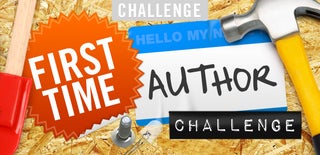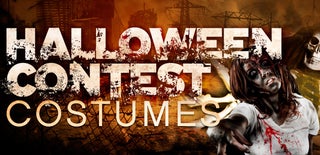Introduction: Disney Planes Dusty Crophopper Costume
Disney Planes Dusty Crophopper Costume
Designed and constructed by
Jeff Robertson
Step 1: Determine the Airplane Size
1. First, determine the size of the airplane needed for your child based on his/her measurements. My son was approximately 7”L (front-to-back) x 12”W (side-to-side) x 36”H (total height). Based on these dimensions, I designed his airplane fuselage (including cockpit) to be approximately 48"L x 16" W x 17"H.
Step 2: Design the Airplane
2. Using Dusty Crophopper images as reference, design and draw the various airplane parts (fuselage, wings, horizontal and vertical stabilizers, propellers, and cockpit). For my design, I created my drawings using drafting software to facilitate the layout and scaling of the airplane. After all the parts are drawn, print the drawings to 1:1 scale. For large drawings that can not be printed to 1:1 scale on a single sheet, print the various portions of the drawing on multiple sheets and then tape the sheets together to obtain the complete 1:1 scaled print.
Step 3: Cut the Cardboard
3. Next, attach the drawings to cardboard using tape. Cut the cardboard along the drawing lines with a case cutter, utility knife, or X-acto knife.
NOTE: Dusty’s front and side cockpit windows are cut out of the cockpit cardboard piece. An appropriately-sized piece of cardboard is hot glued to the backside of the front cockpit window. The layered surfaces will give the impression of depth once the eye decals are installed. Two appropriately-sized pieces of clear acrylic plexiglass are hot glued to the backside of the side cockpit windows to mimic real cockpit windows.
Step 4: Fuselage Assembly
4. After cutting out all the airplane parts, start assembling the fuselage. Attach the individual fuselage cardboard pieces together using hot glue.
NOTE: Duct tape can be used on the interior surfaces for extra durability. Packaging tape can be used on the exterior surfaces to smooth out corners.
Step 5: Cockpit and Horizontal/vertical Stabilizers Assembly
5. Next, attach the cockpit and horizontal/vertical stabilizers to the fuselage using hot glue. These parts are surface-mounted to the fuselage.
Step 6: Exhaust Pipe Assembly
6. Using two short 3/4” PVC pipes (approximately 2-3” long), a 3/4” PVC 90 degree elbow, and a 3/4” PVC cap, create the exhaust pipes. Cut a hole in the fuselage in the approximate location shown. Using PVC cement or krazy glue, assemble the two short PVC pipes and 90 degree elbows first. Insert these sub-assemblies into the fuselage holes. Then, apply hot glue to the inside of these areas. Next, install the PVC caps to the PVC pipes from the inside to secure these exhaust pipes in place.
Step 7: Propeller Assembly
7. The propeller assembly is made up of cardboard for the propeller blades, 3/4” PVC pipe, and a cardboard witch’s hat that I picked up at a craft store for the spinner. The tip and base of the witch’s hat was cut off and a 3/4” PVC pipe was installed inside of it. I cut holes into the spinner and installed the propeller blades into these holes using hot glue. I installed 1/2” PVC pipe from approximately 6” in front of the fuselage to approximately 12” behind the front of the fuselage. Using hot glue, the 1/2” PVC pipe is mounted inside a hole in the front of the fuselage and also inside a hole in a piece of cardboard that is mounted inside the fuselage. The propeller assembly is then installed onto the 1/2” PVC pipe. Using PVC cement or krazy glue, install a 1/2” PVC cap to prevent the propeller assembly from being removed. The propeller assembly should spin easily without coming off.
Step 8: Wing Assembly
8. Next, assemble the cardboard wings. Cut out the approximate shape of the wings in the fuselage. Install one wing inside the fuselage and hot glue it to the interior surface of the fuselage. Using hot glue, install a piece of 3/4” PVC pipe inside the wings to provide rigidity. For my son’s airplane, which is approximately 55” wide wingtip-to-wingtip, I used a 36” long piece of PVC. Next, install the other wing using the same method as above; ensuring the PVC pipe fits inside the cardboard wing.
Step 9: Painting the Airplane
9. The airplane is now ready to be painted. I applied several light coats of white acrylic gesso primer to provide a good base for my paint. The use of primer is a good idea since paint tends to warp cardboard. I then painted over the primer with standard acrylics. I used silver metallic acrylic paint for the propeller spinner and exhaust pipes to give them a metallic/chrome look. Also, I printed all the decals on glossy paper and attached them to the airplane with krazy glue.
Step 10: Mounting the Airplane
10. Next, determine your method of mounting the airplane to your child. Since my child was small, I had to attach the airplane to his tricycle using tie wraps. For larger children, you can attach suspenders to the airplane and let the child wear the airplane around their shoulders. Just be aware of the airplane’s weight distribution and center of gravity.

Participated in the
First Time Author Challenge

Participated in the
Halloween Costume Contest











